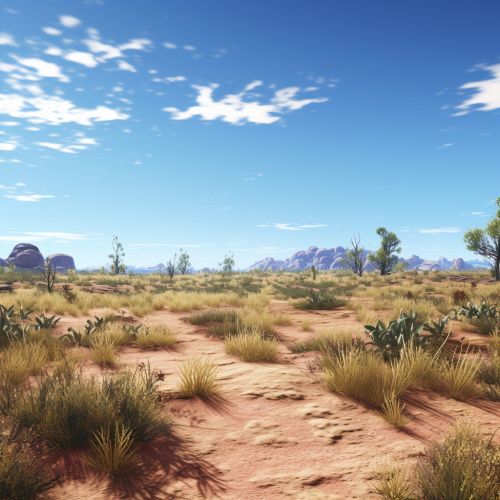The Ecology of Desert Ecosystems and Water Conservation
Introduction
Desert ecosystems are unique biomes characterized by low rainfall, extreme temperatures, and a scarcity of vegetation. Despite these harsh conditions, desert ecosystems are home to a variety of plants and animals adapted to survive in such environments. Water conservation in these ecosystems is a critical factor, as it directly influences the survival and distribution of organisms. This article delves into the ecology of desert ecosystems and the importance of water conservation in these areas.
Desert Ecosystems
Desert ecosystems are found in regions that receive less than 25 cm of rainfall annually. They can be classified into four types: hot and dry deserts, semi-arid deserts, coastal deserts, and cold deserts read more. Each of these desert types has a unique set of characteristics and species adapted to its specific conditions.
Hot and Dry Deserts
Hot and dry deserts, also known as subtropical deserts, are characterized by high temperatures during the day and cold temperatures at night. The soil in these deserts is coarse and rocky, with poor water retention properties. Plants in these deserts have adapted to conserve water, with features such as thick, waxy leaves, deep root systems, and the ability to store water in their tissues read more.
Semi-arid Deserts
Semi-arid deserts, also known as cold winter deserts, have moderate winter temperatures and hot summers. The soil in these deserts is sandy or gravelly, with better water retention properties than hot and dry deserts. The vegetation is sparse, consisting mainly of hardy shrubs and grasses.
Coastal Deserts
Coastal deserts are found in cool coastal areas and have a stable, moderate temperature throughout the year. The soil is sandy and porous, with a high salt content. The vegetation in these deserts is mainly composed of succulent plants, which are adapted to survive in high-salt conditions.
Cold Deserts
Cold deserts, also known as polar deserts, are found in the polar regions. They have cold winters and short, cool summers. The soil is heavy with a high clay content, and the vegetation is sparse, consisting mainly of lichens and mosses.


Water Conservation in Desert Ecosystems
Water conservation is a crucial survival strategy in desert ecosystems. Both plants and animals have developed various adaptations to conserve water and survive in the arid conditions.
Water Conservation in Plants
Desert plants, also known as xerophytes, have developed several adaptations to conserve water. These include thick, waxy leaves to reduce water loss through transpiration, deep root systems to access groundwater, and the ability to store water in their tissues. Some plants also have a reduced leaf surface area to minimize water loss, and others have leaves that are modified into spines to reduce transpiration and protect the plant from herbivores.
Water Conservation in Animals
Desert animals, or xerocoles, also have adaptations to conserve water. These include a highly efficient kidney to minimize water loss through urine, the ability to obtain water from the food they eat, and behavioral adaptations such as being nocturnal to avoid the heat of the day. Some desert animals also have a low metabolic rate to reduce water loss through respiration.
Impact of Water Conservation on Desert Ecosystems
Water conservation has a significant impact on the biodiversity and functioning of desert ecosystems. By conserving water, plants and animals can survive in arid conditions, contributing to the biodiversity of the ecosystem. Water conservation also influences the distribution of organisms in the desert, with species being distributed based on their ability to access and conserve water.
Human Impact and Water Conservation
Human activities have a significant impact on desert ecosystems and their water conservation strategies. Activities such as overgrazing, deforestation, and climate change can disrupt the delicate balance of desert ecosystems, leading to a loss of biodiversity and changes in the functioning of the ecosystem. Therefore, it is crucial to implement sustainable practices to conserve these unique ecosystems.
See Also
- Adaptations of Desert Animals
- Effects of Climate Change on Deserts
- Sustainable Practices in Desert Ecosystems
